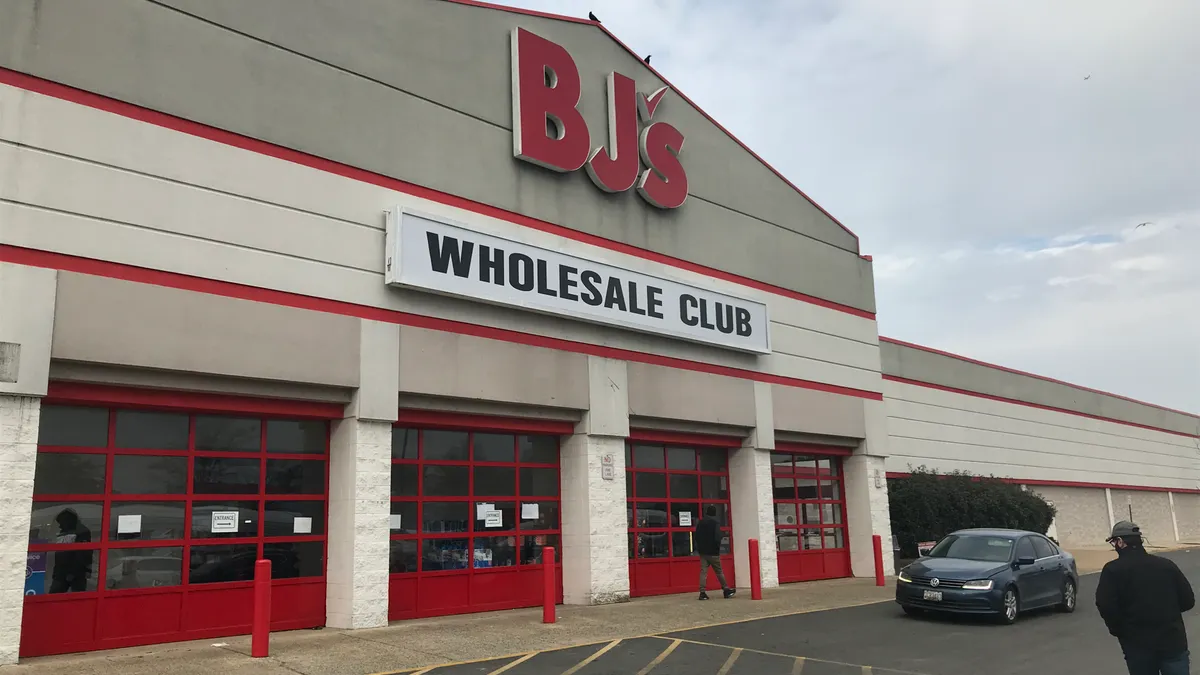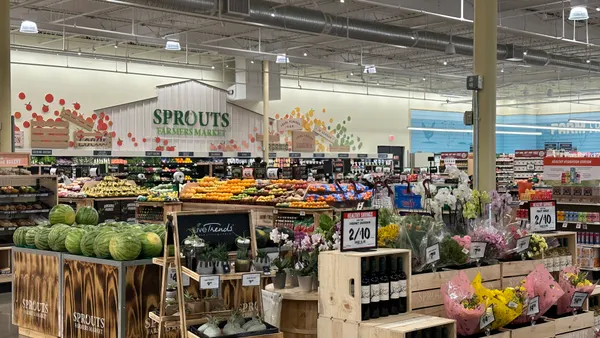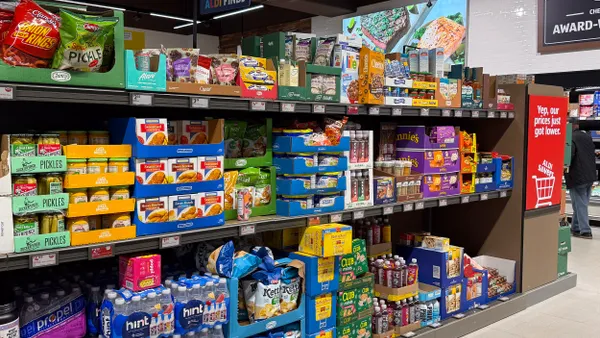Dive Brief:
- BJ’s Wholesale Club recorded 7.6% year-over-year growth in comparable store sales, excluding gasoline, during the second quarter of 2022, with the grocery and perishable categories leading the way, President and CEO Bob Eddy said during an earnings call Thursday.
- The club retailer’s profitability increased sharply during Q2, as adjusted earnings per share rose 29%, fueled by strong demand for gasoline, Eddy said.
- BJ’s posted stronger sales gains in Q2 than it did during the first quarter, as surging inflation and high gas prices drove shoppers to its stores.
Dive Insight:
BJ’s is continuing to reap benefits as shoppers search for ways to escape fast-rising food prices and save money at the gas pump.
The retailer’s overall comparable sales were up 19.8% in Q2 compared with the same period in 2021, up from the 14.4% year-over-year gain the company saw in Q1. Gas sales aside, BJ’s same-store sales growth during Q2 was nearly twice what it saw during the last quarter, when the figure came in at 4.1%.
Eddy highlighted BJ’s efforts to demonstrate the value of its membership fee to shoppers. He pointed out, for example, that by the company’s calculations, a shopper who buys a pound each of turkey and cheese at its full-service deli per week would save about $260 per year, or about five times the cost of an annual membership.
BJ’s is also intent on building up private label penetration, which Eddy said grew to 25% in Q2, a year-over-year increase of about 2 percentage points. The company wants to push the figure to 30%, and is bringing on staff to help it reach that goal, Eddy said.
While BJ’s relies on discounted gas prices to lure shoppers, Eddy noted the percentage of customers who go into its stores after filling up “decreased a little bit” during the past six months as people stopped for fuel more often than they needed to make other purchases.
Even so, Eddy said gasoline serves as a key way to build loyalty with shoppers, adding that even as fuel prices have come down in recent weeks, BJ’s continues to add members.
“Historically, when costs have gone down, gas gallons have gone down, but the shopping behavior of folks … is sticky. They become habituated to get into our parking lots, get into our stores, and that's what we run the gasoline business for,” Eddy said.
BJ’s sold 18% more gallons of gas during Q2 compared with the second quarter of 2021, according to Eddy.
In a nod to the importance fuel plays in driving its business, BJ’s plans to increase the proportion of its stores that sell gas to about 75%, up from the two-thirds of its locations that now offer the commodity, Eddy said.
The retailer, which currently operates 229 stores in 17 states, is on course to debut 11 locations this year, with three set to open during the third quarter, Executive Vice President of Strategy and Development Bill Werner said during the call. BJ’s plans to increase its store count by about 5% annually during the next several years, according to Werner.
In a sign of the company’s quickening growth, BJ’s opened up 10 locations between 2016 and 2020, Eddy noted. “Our decision to accelerate our new club opening pace stems from the performance of new clubs over the past handful of years, both in existing and new markets. In existing markets, sales at these new clubs are running well above our initial expectations,” he said.
BJ’s Q2 performance came in behind that of rival club retail Sam’s Club, which recorded a year-over-year comparable sales gain during the period of 9.5%, excluding fuel.










